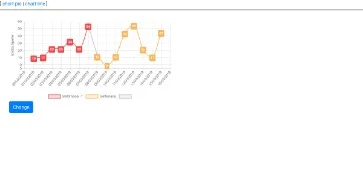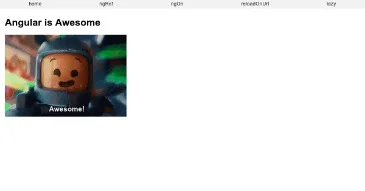Correct Use For Angular
Content
- Automate Your Localization Workflow For Continuous Deployment
- Delta Between Version 2 184 And Version 2190
- Development Tip: Internationalisation In Angularjs Apps With Angular Translate
- The Best React State Management Tools For Enterprise Applications
In the footer template file, add two buttons in a button group to change languages between Chinese and English. English and Deutsch you can not add in mapping languages file. But it is better to write it in translate directive but not in plain text. With this translation table in place, our app is set to use angular-translate. Since we’re adding the translation table at configuration time, angular-translate’s components are able to access it as soon as they are instantiated. Why $translate.instant() and not just async $translate()?
- See the angular-translate tutorial on ng-newsletter for a great introduction to the module.
- Get tips on how to optimize your localization workflow and learn all about the newest Phrase features.
- But we have not set about there, it displays the original text, and does not indicate what we had omitted.
- In this article, you will learn how you can internationalize your AngularJS app, and will learn about tools that you can use to ease the process.
When a user visits our apps, he or she should be able to switch languages on the fly at run time. A quick update, I deleted all the other dependencies from my bower.json and added only angular.js and angular-translate.js and now it’s working. However, I would like to have all my translations in different json files using loader-static files, but this does not work for me. Since version 2.8.0 there is also $translate.onReady(), which returns a promise that is resolved as soon as translations are ready.
Automate Your Localization Workflow For Continuous Deployment
The advice is that we need to set the columnDefs array to a variable, then replace that variable entirely . We also get a very specific syntax for linking the columnDefs to that variable on our scope.

If you’re familiar with the Phrase In-Context Editor you know what a powerful tool it is to speed up the translation process and boost the content’s quality. Editing translations directly on the page is fast and easy! If you don’t know In-Context Editing yet, have a look at our demo. AngularJS is an awesome Javascript framework to build single-page applications with Javascript. We’re huge fans of the framework that was developed and is maintained by the Google team. It is pretty scalable and allows the addition of new languages in minutes without any pain.
Delta Between Version 2 184 And Version 2190
This method tells angular-translate which of the registered languages is the one that our app should use by default. It expects an argument with the value of the language key, which points to a certain translation table. When we set our first translation table, we can provide it a key that specifies the language we’re translating. We can simply add another translation key with another language key.

Within a controller, you can use the $translate service. For me, I built an i18n service, and it initialised a base set of parts up front. But to me the point of partial loader is that you load incrementally – if you’re just going to default load them all right up front, you’re better using the static loader. What we’re doing is creating a function that sets the column defs, that function uses the translation routines. We call that on entry, it will fail to translate the column headers. We then listen for the translation success event, which is fired once the translation files have loaded, and we call again to update the column headers.
First, we need to provide translation material so our app can actually speak a new language. This step entails configuring the $translate service through our fresh $translateProvider service. Instead of creating new templates, we can use angular-translate, an AngularJS module that brings i18n to your Angular app. Angularjs-translate requires us to create a JSON file that represents translation data per language. It lazy loads the language-specific translation data from the server only when necessary. For example, we are providing information the current release is still working with AngularJS 1.2. Maybe it works in older ones, but will do not run tests against it and therefor do not support it.
Let’s see angular-translate’s real power and learn how to teach our app more than one language. Once we’ve installed the latest stable version of angular-translate, we can simply embed it in our HTML document. Just make sure it’s embedded after Angular itself, as it depends on the core angular library. To use angular-translate, we need to load the library. We can install it in several different ways, but we prefer using Bower. The angular-translate library comes with built-in directives and filters that make it simple to internationalize our apps. Could you please confirm which version of angular-translate resolves the service $translate as a promise (so .then can be used in the service).
Development Tip: Internationalisation In Angularjs Apps With Angular Translate
If this is not handled carefully, your application’s performance can suffer needlessly. For a truly dynamic experience, you can add angular-dynamic-locale to the bunch. This library allows you to change the locale dynamically—and that includes the way dates, numbers, currencies, etc. are all formatted. In this post, I am going to overview about an angular library which is very simple & popular and most of you have heard about it.
This is my preferred way since I don’t have to handle promises this way. The output of the filter can be directly set to a scope variable. Another version of gulp-angular-translate-extract.
AngularJS, with the help of a few tools, makes internationalizing your app a breeze. In this article, Toptal Freelance Software Engineer Mehmet Bajin gives us a step-by-step tutorial to internationalizing and localizing AngularJS apps. Many of us face such situations wherein we want to add translations within your personal application or projects to address a global audience. The fact is true that people adopt these applications more easily than any other applications by making their day-to-day use in native languages. The unit tests are available with npm test which is actually a shortcut for grunt test. It performs tests under the current primary target version of AngularJS. Use npm run-script test-scopes for testing other scoped versions as well.
Unlike i18n data, locale rules are global to the application, requiring the rules for a given locale to be loaded all at once. In this section, you will learn how you can use angular-dynamic-locale to support formatting of UI elements such as numbers, currencies, dates, and the like, in an AngularJS application.

This is a simple json hash, with each translation key and the associated decode. We duplicate this file for each of the languages we want to support, putting it in the directory associated with that language. I would rather translate on server and send the translated values to client. It will avoid in all the torture and govt budget like expensive code management with angular translation. REST services has built in locale support so I don’t see a point in cluttering client side code to unmanageable level. The previous section showed how you can provide translation tables directly in the source code as JavaScript objects. This may be acceptable for small applications, but the approach is not scalable, which is why translation tables are often downloaded as JSON files from a remote server.
For compliance reasons, the cookie that is used to store the currently in use language needs to be a “Secure” cookie. This is available in the API used by angular-translate to set the cookie. Please provide a flag/option on the storage service to use a secure cookie instead of the insecure. If the view in which consist application will reload language will be set to default. It is possible to save chosen language in local storage or cache.
Most of the time, we are getting support questions of invalid configurations. We encourage everyone to have a look at our documentation website. If you think the documentation is not correct or should be optimized please file an issue. As worldwide access to the web increases, we as developers are constantly pressed to make our apps internationally and locally accessible.
This library allows “on-the-fly” translation of content, and permits dynamically changing languages with automatic page refresh. In our new video tutorial, you can learn how to format text using the pipes option. Alexander Ancypov from the Appery.io team will guide you through the process of creating pipes from the very beginning of the process till app testing. For correct filter and directive working key value in the nested object should be without spaces. In the official documentation, there is a recommendation to name keys of the object in the table with capital letters and low dashes because it is constant. It’s important to spend time and decide about namespacing in each case.